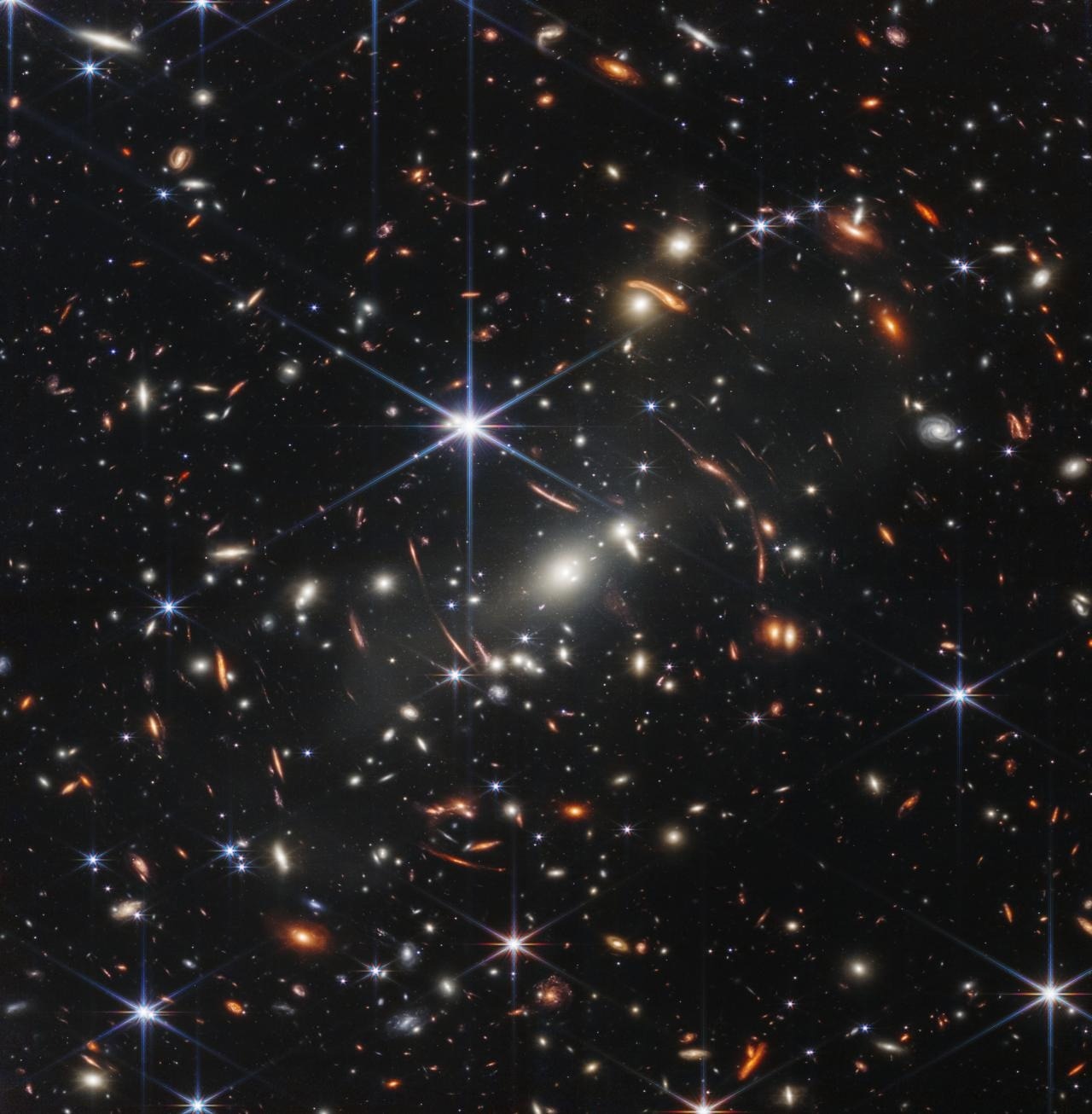A new study, completely carried out by scientists at the Instituto de Astrofísica de Canarias (IAC), has come up with the most comprehensive analysis thus far of the intracluster light (ICL)—the diffuse and faint light—discharged by stars in galaxy clusters that are not gravitationally connected to any galaxy.

Image of the James Webb Telescope's “First Deep Field” that has made it possible to study the intra-cluster light of the SMACS-J0723.3-7327 cluster. Image Credit: NASA, ESA, CSA, STScI
This finding was established by data obtained from the new James Webb Space Telescope (JWST). The study offers new clues concerning the development processes of galaxy clusters and the composition of dark matter. The study has been published in the journal Astrophysical Journal Letters.
In galaxy clusters, a section of stars move into intergalactic space because they are dragged by massive tidal forces produced between the galaxies in the cluster. The light discharged by these stars is referred to as ICL and is very faint; its brightness is below 1% of the brightness of the darkest sky that can be seen from Earth. This is one objective why images captured from space are extremely valuable for examining it.
Infrared wavelengths enable clusters of galaxies to be explored differently than with visible light. Owing to its efficacy at infrared wavelengths and the image sharpness of the JWST, IAC scientists Mireia Montes and Ignacio Trujillo could examine the ICL from SMACS-J0723.3-7327 with an unparalleled level of detail.
In actual fact, the JWST images of the center of this cluster are two times as deep as the preceding images received by the Hubble Space Telescope.
In this study, we show the great potential of JWST for observing an object which is so faint. This will let us study galaxy clusters which are much further away, and in much greater detail.
Mireia Montes, Study First Author, Instituto de Astrofísica de Canarias
To examine this very weak “ghostly” light, as well as requiring the observational potential of the new space telescope, scientists have formulated new examination methods which will enhance the prevailing approaches.
In this work, we needed to do some extra processing to the JWST images to be able to study the intracluster light, as it is a faint and extended structure. That was key to avoid biases in our measurements.
Mireia Montes, Study First Author, Instituto de Astrofísica de Canarias
Owing to the data gathered, the scientists could show the potential of the ICL for exploring and comprehending the processes that take place for the creation of structures as enormous as clusters of galaxies.
“Analyzing this diffuse light we find that the inner parts of the cluster are being formed by a merger of massive galaxies, while the outer parts are due to the accretion of galaxies similar to our Milky Way” she notes.
These findings not only provide insight into the creation of galaxy clusters, but also provide clues concerning the properties of an enigmatic component of the universe: dark matter. The stars which discharge the ICL follow the cluster’s gravitational field, which renders this light an exceptional tracer of the dispersal of the dark matter in these structures.
The JWST will let us characterize the distribution of the dark matter in these enormous structures with unprecedented precision, and throw light on its basic nature.
Ignacio Trujillo, Study Second Author, Instituto de Astrofísica de Canarias
Journal Reference
Montes, M. & Trujillo, I. (2022) A new era of intracluster light studies with JWST. Astrophysical Journal Letters. doi.org/10.3847/2041-8213/ac98c5.